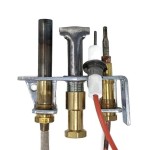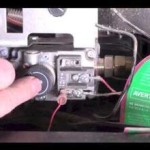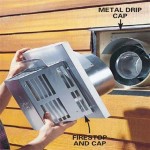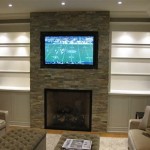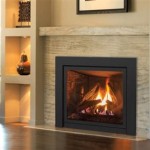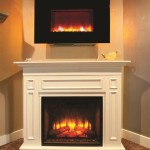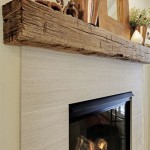Energy Efficient Gas Fireplaces: A Comprehensive Guide
The demand for efficient and aesthetically pleasing heating solutions has led to the increased popularity of energy-efficient gas fireplaces. These appliances offer a balance of ambiance, warmth, and reduced energy consumption, making them an attractive alternative to traditional wood-burning fireplaces or less efficient gas models. Understanding the key features and technologies that contribute to energy efficiency is crucial for homeowners considering investing in a gas fireplace.
This article explores the factors contributing to the energy efficiency of gas fireplaces, examining the technology, design elements, and installation practices that optimize performance and minimize energy waste. It delves into the various types of gas fireplaces available and provides insights into selecting the most appropriate and efficient model for specific heating needs and home environments.
Understanding Gas Fireplace Efficiency Ratings
The efficiency of a gas fireplace is typically measured using Annual Fuel Utilization Efficiency (AFUE). AFUE represents the percentage of fuel consumed that is actually converted into usable heat. A higher AFUE rating indicates a more efficient fireplace, meaning less fuel is wasted during the combustion process. Generally, gas fireplaces with AFUE ratings above 70% are considered efficient, with high-efficiency models reaching ratings of 80% or higher. It's important to note that AFUE ratings are determined under controlled laboratory conditions. Actual performance in a home environment can vary depending on factors such as insulation, climate, and usage habits.
Additionally, the energy factor (EF) rating is used to measure the standing pilot lights in gas fireplaces. These pilot lights are always on and consume energy. The EF rating is used to measure the efficiency of the standing pilot light. They are not a good choice if you are looking for an energy-efficient model.
Another important consideration is the types of gas used in gas fireplaces. Most gas fireplaces use either natural gas or liquid propane (LP). Each type of gas has a different BTU measurement, which dictates how much heat it can generate.
When comparing different gas fireplace models, carefully examine their AFUE ratings and other energy efficiency certifications, such as Energy Star. These ratings provide a reliable basis for comparing the energy performance of different models and making informed purchase decisions.
Key Features Contributing to Energy Efficiency
Several design and technological features contribute to the energy efficiency of gas fireplaces. These advancements aim to maximize heat output while minimizing fuel consumption and heat loss. Some of the most important features include:
*Sealed Combustion:
Sealed combustion systems draw air from outside the home for combustion and vent exhaust gases directly outside. This prevents the fireplace from using heated indoor air, which reduces drafts and improves overall energy efficiency. Sealed combustion fireplaces are generally more efficient than traditional open-hearth fireplaces. *Direct Vent Technology:
Direct vent fireplaces are a type of sealed combustion system that vents exhaust gases directly through a wall or roof. This eliminates the need for a chimney, which can be a significant source of heat loss in traditional fireplaces. Direct vent fireplaces are also safer, as they prevent exhaust gases from entering the home. *Electronic Ignition:
Electronic ignition systems eliminate the need for a standing pilot light, which continuously burns gas and consumes energy. Instead, electronic ignition systems use an electronic spark to ignite the gas when the fireplace is turned on. This can save a significant amount of energy over time. *Variable Flame Height and Heat Output:
Many modern gas fireplaces feature variable flame height and heat output settings. This allows homeowners to adjust the heat output to match their specific heating needs, reducing energy consumption when less heat is required. *Thermostatic Control:
Thermostatic controls maintain a consistent room temperature by automatically adjusting the flame height and heat output. This prevents the fireplace from overheating the room and wasting energy. *Intelligent Controls and Automation:
Some gas fireplaces are equipped with smart home integration, allowing for remote control and programming of heating schedules. This optimizes energy usage by only heating the space when needed. *Heat Exchanger Design:
The design of the heat exchanger, which transfers heat from the combustion chamber to the room, plays a crucial role in efficiency. Efficient heat exchangers maximize heat transfer while minimizing heat loss through the venting system. *Glass Fronts and Doors:
The glass front of a gas fireplace helps to radiate heat into the room. High-quality glass can further improve efficiency by trapping heat and preventing drafts. Doors can be closed to further contain heat when the fireplace is not in use. *Blower Fans:
Many gas fireplaces have blower fans that distribute heat more evenly throughout the room, improving comfort and reducing the need to run the central heating system. Some blower fans also have variable speed settings.Optimizing Installation and Usage for Enhanced Efficiency
Even the most energy-efficient gas fireplace will not perform optimally if it is not properly installed and used. Following best practices for installation and usage is essential for maximizing energy savings and ensuring safe operation.
*Professional Installation:
Proper installation by a qualified technician is crucial for ensuring the fireplace operates safely and efficiently. A professional will ensure that the venting system is properly installed, the gas connections are secure, and the fireplace is properly sealed to prevent air leaks. *Proper Sizing:
Selecting the appropriate size fireplace for the space being heated is essential. An oversized fireplace will consume more energy than necessary, while an undersized fireplace will not provide adequate heat. A professional can help determine the appropriate BTU output for the space. *Insulation:
Properly insulating the area around the fireplace can help to prevent heat loss and improve energy efficiency. This includes insulating the walls behind the fireplace and sealing any gaps around the fireplace opening. *Regular Maintenance:
Regular maintenance, such as cleaning the burner and venting system, is essential for ensuring the fireplace operates efficiently and safely. Refer to the manufacturer's instructions for recommended maintenance procedures. *Optimize Usage:
Using the fireplace only when needed and adjusting the flame height and heat output to match the heating needs can significantly reduce energy consumption. Avoid using the fireplace as the primary heating source during extremely cold weather. *Draft Mitigation:
When the fireplace is not in use, ensure the damper is closed (for vented models) to prevent drafts. Consider installing a fireplace draft stopper to further minimize air leaks. *Smart Thermostat Integration:
If the gas fireplace is equipped with smart home integration, use the scheduling feature to program the fireplace to turn on and off at specific times. This can help to reduce energy consumption by only heating the space when needed.Choosing an energy-efficient gas fireplace requires careful consideration of AFUE ratings, design features, and installation practices. By understanding these key factors, homeowners can select a model that provides both warmth and energy savings, contributing to a more comfortable and sustainable home environment.
Furthermore, the long-term cost savings associated with energy-efficient gas fireplaces can be substantial. While the initial investment may be higher than that of less efficient models, the reduced energy consumption over the lifespan of the fireplace can more than offset the initial cost difference.
Researching and comparing different models, consulting with qualified professionals, and carefully considering individual heating needs are essential steps in selecting the right energy-efficient gas fireplace. These efforts will result in a gas fireplace for comfort, warmth, and energy savings.

5 Surprising Facts About The Best Gas Fireplaces

Which Gas Fires Are The Most Efficient Direct Fireplaces

Saving Energy With Gas Fireplaces Bonfire

Energy Efficient Wood Burning Fireplaces

How To Choose An Energy Efficient Gas Fireplace Eboss

Gas Fireplace Faq Fireplaces Direct Learning Center

How To Choose An Energy Efficient Gas Fireplace Eboss

Which Gas Fires Are The Most Efficient Direct Fireplaces

Energy Efficient Fireplaces Natural Gas Appliances Centerpoint

Buyer S Guide To High Efficiency Gas Fires The Fireplace Studio
Related Posts

